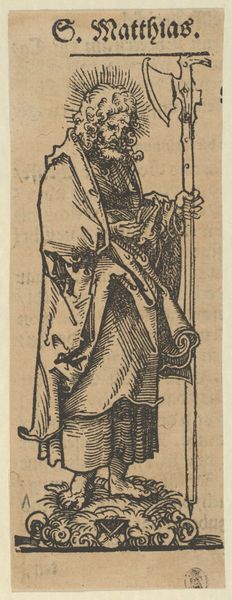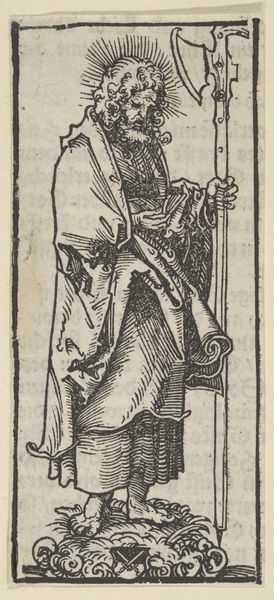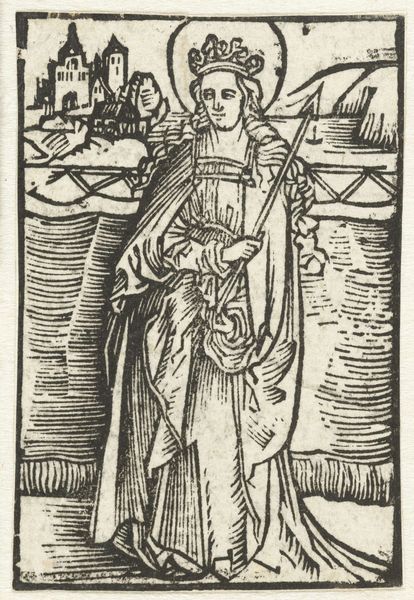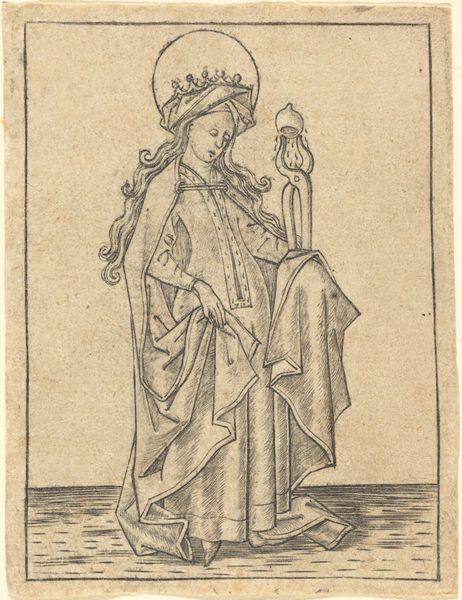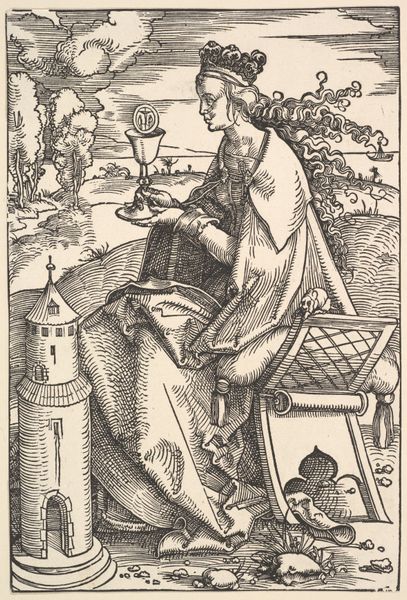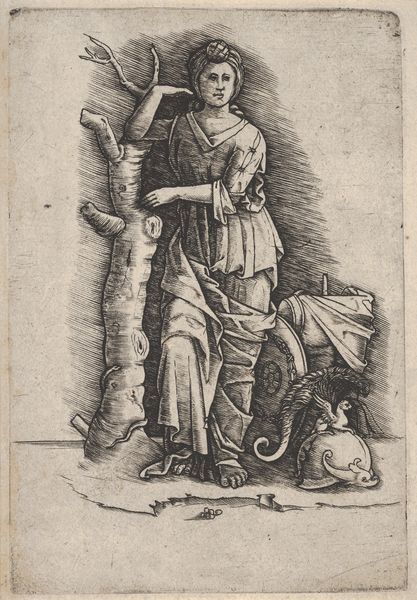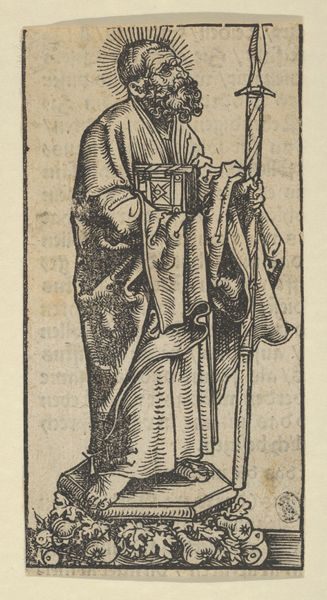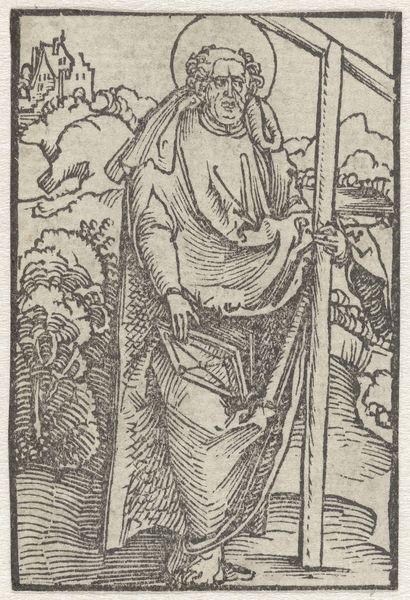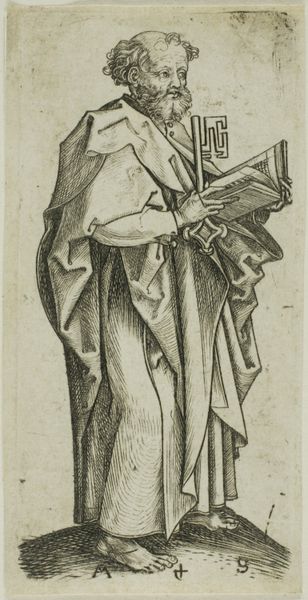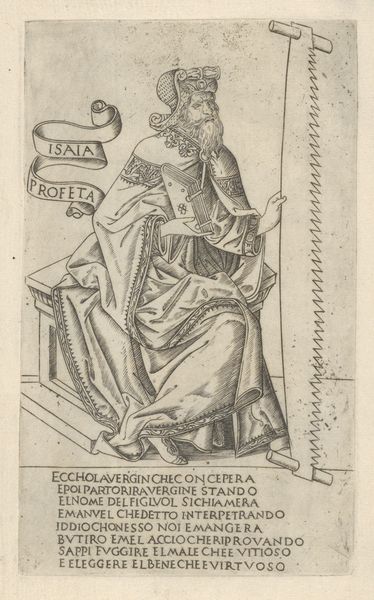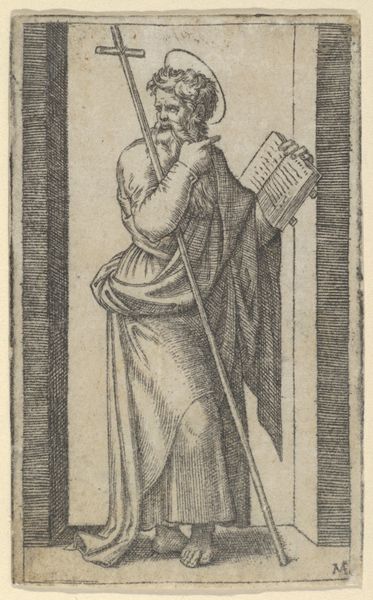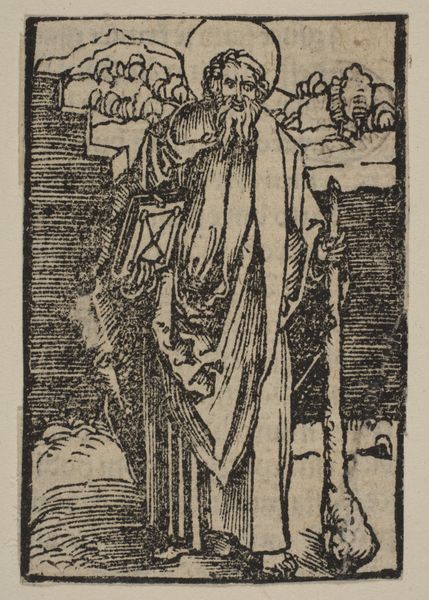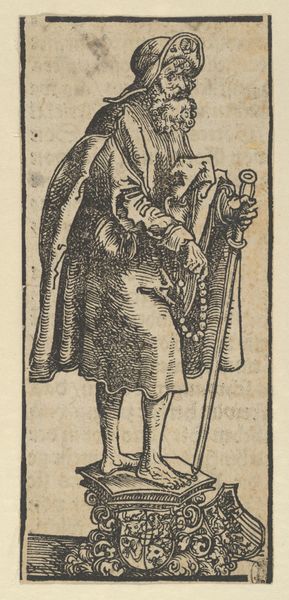
drawing, print, woodcut
#
portrait
#
drawing
#
medieval
# print
#
figuration
#
woodcut
Dimensions: sheet: 7.6 × 5.5 cm (3 × 2 3/16 in.)
Copyright: National Gallery of Art: CC0 1.0
Editor: So, this is "Saint Augustine" from around 1450-1460 by Master with the Banderoles. It's a woodcut print, which is pretty cool. It feels stark and kind of geometric. What jumps out at you about this piece? Curator: Well, consider the labor involved. Each line, each plane of shadow, was painstakingly carved into a block of wood. This is not a quick sketch, but a deliberate act of production. The visible tooling marks tell us something about the maker, his skill, and the material constraints. Editor: So, the actual process of *making* it is important? Curator: Absolutely. It’s easy to get caught up in the image—a saint writing, the symbolic heart. But look at how the wood dictates the forms. The blocky drapery, the hatched shadows—these are products of the medium itself. It makes you wonder, too, about the context of production. Editor: Like, who was buying these prints? Curator: Exactly! Prints like these were relatively accessible. How does this change our understanding of religious iconography at the time? Editor: Hmm, so it's not just about the *what* but the *how* and the *for whom.* The medium becomes the message, in a way? I never really thought about that aspect of older art like this. Curator: Precisely. And what about the paper itself? Where did it come from? Who made it? Editor: Wow. It kind of changes everything when you think of it that way. Thanks for opening my eyes!
Comments
No comments
Be the first to comment and join the conversation on the ultimate creative platform.
